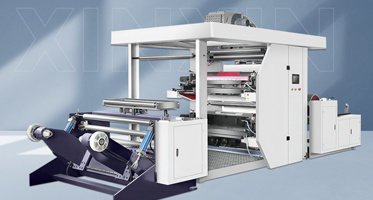15
2025
-
01
Understanding Flexographic Printing Machines: An Essential Guide for Manufacturers
Author:
Flexographic printing machines are a vital component of the printing and packaging sectors, known for their ability to produce high-quality prints on a variety of substrates. These machines utilize a flexible relief plate to transfer ink onto materials, making them ideal for printing on uneven surfaces such as corrugated boxes, labels, and flexible packaging. This method is advantageous for manufacturers looking for efficiency and versatility in their printing operations.
One of the primary benefits of using a flexographic printing machine is its capability to handle fast production speeds. These machines are designed for high-volume runs, allowing businesses to meet tight deadlines without sacrificing print quality. The printing process is known for its quick drying times, which further enhances productivity. Manufacturers can produce large quantities of printed materials in a shorter timeframe compared to traditional printing methods.
Flexographic printing is also highly adaptable to various inks and substrates. Whether you are printing on plastic, paper, or metalized films, flexographic printing machines can accommodate different materials, making them a preferred choice for diverse applications. The ability to work with water-based, solvent-based, and UV inks allows manufacturers to select the best option for their specific needs, ensuring optimal results across different projects.
Moreover, advancements in technology have led to the development of more sophisticated flexographic printing machines equipped with features that promote efficiency. For instance, modern machines may include automated registration systems and quick-change plate technology, which minimize downtime and improve overall operational efficiency. These innovations not only enhance productivity but also reduce waste, making flexographic printing a cost-effective solution for manufacturers.
In addition to their efficiency, flexographic printing machines are also recognized for their environmental benefits. Many machines are capable of utilizing eco-friendly inks and processes, which can significantly reduce the environmental impact of printing operations. By choosing a flexographic printing machine that prioritizes sustainability, manufacturers can contribute to greener practices within the printing industry.
To summarize, flexographic printing machines play a crucial role in manufacturing and processing within the printing sector. Their ability to deliver high-speed production, adaptability to various substrates, and advancements in technology make them an indispensable tool for businesses aiming to enhance their printing capabilities. As manufacturers continue to seek efficient, high-quality solutions, understanding the advantages of flexographic printing machines will be essential for staying competitive in the industry. Embracing this technology can lead to improved workflow, reduced waste, and a stronger commitment to sustainability in printing practices.
One of the primary benefits of using a flexographic printing machine is its capability to handle fast production speeds. These machines are designed for high-volume runs, allowing businesses to meet tight deadlines without sacrificing print quality. The printing process is known for its quick drying times, which further enhances productivity. Manufacturers can produce large quantities of printed materials in a shorter timeframe compared to traditional printing methods.
Flexographic printing is also highly adaptable to various inks and substrates. Whether you are printing on plastic, paper, or metalized films, flexographic printing machines can accommodate different materials, making them a preferred choice for diverse applications. The ability to work with water-based, solvent-based, and UV inks allows manufacturers to select the best option for their specific needs, ensuring optimal results across different projects.
Moreover, advancements in technology have led to the development of more sophisticated flexographic printing machines equipped with features that promote efficiency. For instance, modern machines may include automated registration systems and quick-change plate technology, which minimize downtime and improve overall operational efficiency. These innovations not only enhance productivity but also reduce waste, making flexographic printing a cost-effective solution for manufacturers.
In addition to their efficiency, flexographic printing machines are also recognized for their environmental benefits. Many machines are capable of utilizing eco-friendly inks and processes, which can significantly reduce the environmental impact of printing operations. By choosing a flexographic printing machine that prioritizes sustainability, manufacturers can contribute to greener practices within the printing industry.
To summarize, flexographic printing machines play a crucial role in manufacturing and processing within the printing sector. Their ability to deliver high-speed production, adaptability to various substrates, and advancements in technology make them an indispensable tool for businesses aiming to enhance their printing capabilities. As manufacturers continue to seek efficient, high-quality solutions, understanding the advantages of flexographic printing machines will be essential for staying competitive in the industry. Embracing this technology can lead to improved workflow, reduced waste, and a stronger commitment to sustainability in printing practices.
Related news
MESSAGE

Mobile website
Contact Us
Contacts:Alen Zhao
WeChat/Whatsapp:+ 86 18857712033
Mobile:+86 18857712033
E-mail:sales@xinxin-flexo.com
Add:No. 511, Development Zone Avenue, Ruian Economic Development Zone, Wenzhou City, Zhejiang Province, China
Fax:+86-577-65160712














